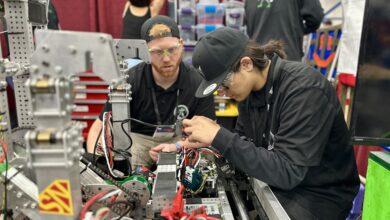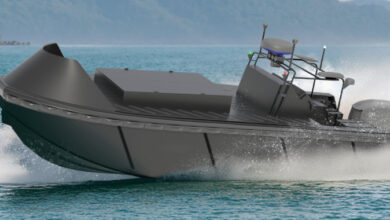What Are Some Key Procedures Where Robotic Technology Has Made Significant Impact?

Robotic gastrointestinal surgery can change the gastrointestinal care landscape by providing patients with fresh hope and chances for better health and well-being, says a doctor.
There have been rapid advancements made in robotics, minimally-invasive procedures, and imaging technology in recent times. In fact, in modern medicine, robotic technology is a shining example of innovation that is making it easier for doctors to conduct surgeries and for patients to make swift recovery. Dr Kona Lakshmi Kumari, consultant surgical gastroenterologist, minimal access GI surgeon, metabolic and bariatric surgeon at Yashoda Hospitals Hyderabad says that in robotic gastrointestinal surgery, for instance, surgeons — with the help of robotic arms — can treat ‘complicated gastrointestinal disorders’ with accuracy, control, and improved visualisation. The arms are equipped with two or more ‘rotational or linear axes’ that allow surgeons to perform complex surgeries with enhanced precision.
From esophagogastric and esophageal cancer to hernia repairs, robotic gastrointestinal surgery can address a variety of conditions; take a look here.
Esophagogastric Procedures
- Esophagectomy for esophageal cancer;
- Hiatal hernia repair and fundoplication;
- Sleeve gastrectomy, mini gastric bypass;
- Cardiomyotomy (Heller’s procedure for Achalasia cardia);
- Gastrectomy for cancers and benign diseases.
HPB (Hepatopancreatobiliary) Procedures
- Liver resection: minor and major;
- Pancreatectomy for pancreatic tumors;
- Splenectomy;
- Radical cholecystectomy for gallbladder cancer’
- Complex HPB surgical procedures like biliary strictures.
Colorectal Procedures
- Right hemicolectomy, left hemicolectomy;
- Low anterior resection, abdominoperineal resection for colorectal cancers;
- Rectopexy for rectal prolapse;
- Total proctocolectomy with pouch anastomosis for ulcerative colitis.
Hernia Repairs
- Complex abdominal wall hernias: incisional, ventral, recurrent hernias;
- Complicated inguinal and femoral hernias.
What Is The Role Of Robotic Surgery In Gastroenterology?
According to Dr Kumari, when it comes to ‘delicate’ procedures like the gastrointestinal tract where precision is important, robotic surgeries ensure enhanced precision and dexterity, as compared to laparoscopic or open surgeries. Some key benefits of robotic-assisted surgeries are:
- Smaller incisions;
- Reduced blood loss;
- Shorter hospital stays;
- Quick recovery times.
Dealing With Doctors’ Exhaustion
Dr Kumari explains that it can often become exhausting for surgeons to do lengthy surgeries without the assistance of robotic arms. “But now, surgeons can do operations while being seated at a console. Additionally, advanced 3D visualisation helps them to see the operating field more clearly, and handle complicated procedures more easily.”
What Are The Advantages For Patients?
The doctor states that robotic technologies can alleviate a patient’s anxiety. “Surgeons, too, find it simpler to persuade patients that a better result is possible. Undergoing surgeries assisted by robotic arms offer a number of advantages: reduced pain and discomfort, quicker recovery, shorter hospital stays, small scars and minimise chance of blood loss and wound infections,” says the doctor, adding that increased dexterity and precision of robotic systems create ‘tailored plans’ to address the unique demands of individual patients. It improves the surgical outcomes.



